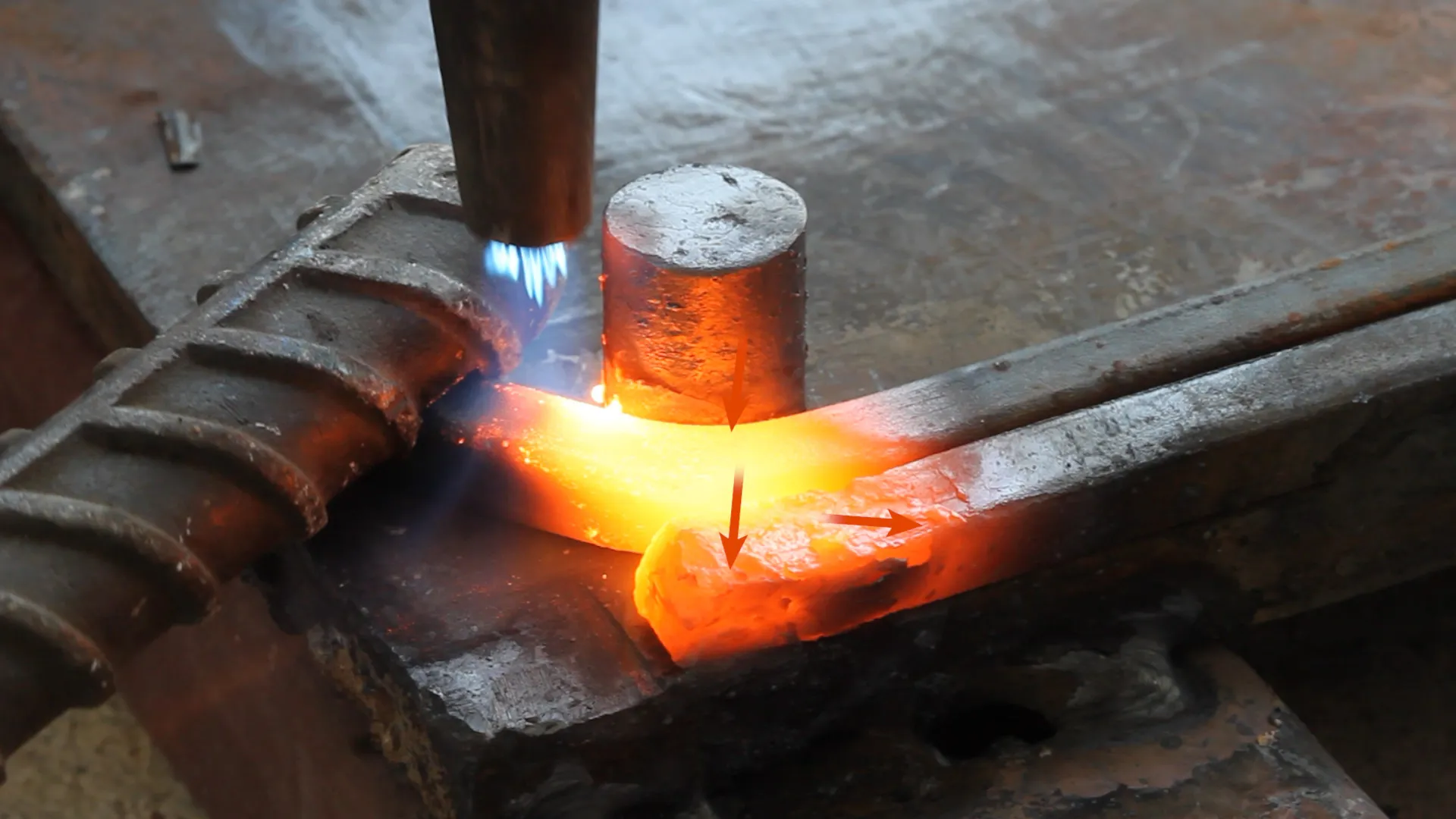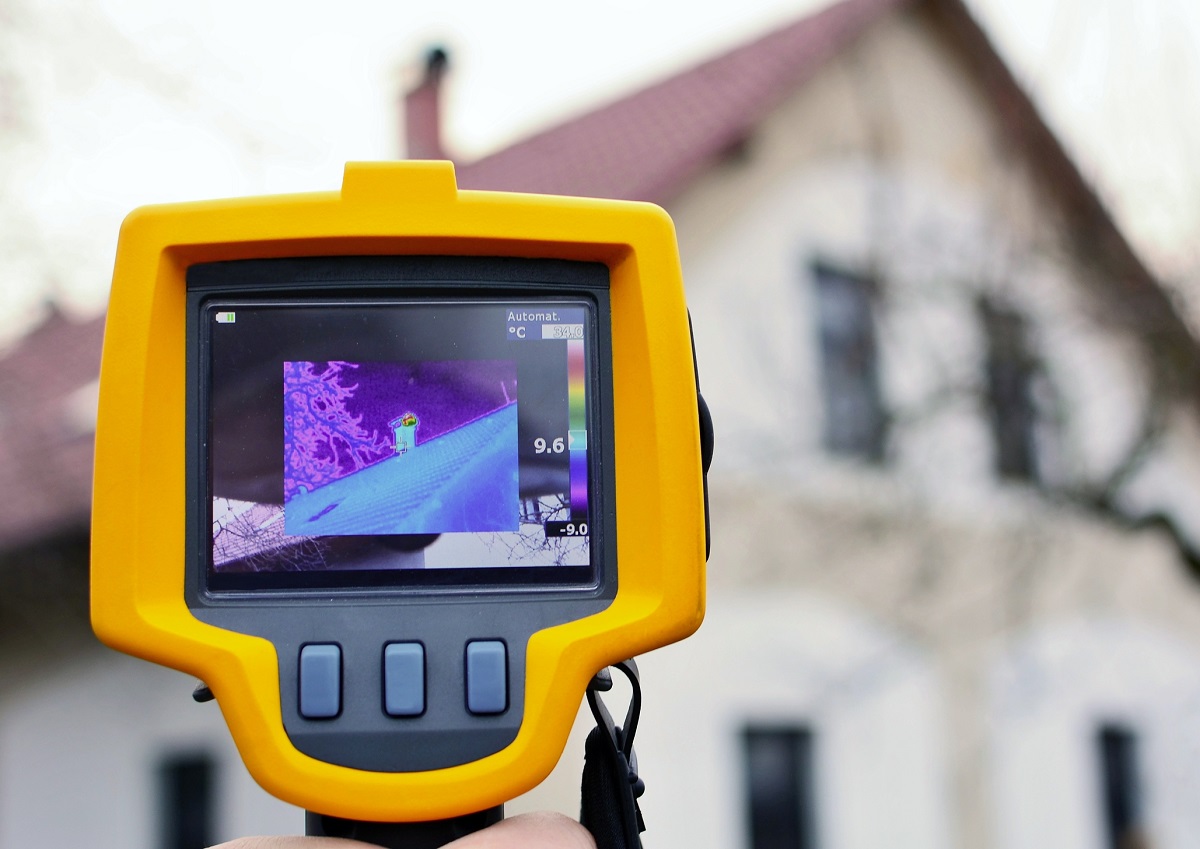Home>Science & Environment>Understanding Thermal Energy Transfer: A Comprehensive Guide


Science & Environment
Understanding Thermal Energy Transfer: A Comprehensive Guide
Published: February 19, 2024
Gain a comprehensive understanding of thermal energy transfer with this guide. Explore the science and environmental impact of this essential process.
(Many of the links in this article redirect to a specific reviewed product. Your purchase of these products through affiliate links helps to generate commission for Temperatures.com, at no extra cost. Learn more)
Table of Contents
- Introduction
- Basics of Thermal Energy Transfer
- Conduction: The Transfer of Heat Through Solids
- Convection: The Transfer of Heat Through Fluids
- Radiation: The Transfer of Heat Through Electromagnetic Waves
- Thermal Energy Transfer in Everyday Life
- Applications of Thermal Energy Transfer
- Factors Affecting Thermal Energy Transfer
- Understanding Thermal Insulation
- Conclusion
Introduction
Thermal energy transfer is a fundamental concept that plays a pivotal role in our daily lives and the functioning of the natural world. Understanding the mechanisms of thermal energy transfer is crucial for comprehending various physical phenomena, from the simple act of warming our hands by a fire to the complex processes occurring within the Earth's atmosphere.
The study of thermal energy transfer delves into the movement of heat from one object to another, shedding light on the intricate ways in which energy disperses and transforms. By exploring the principles of conduction, convection, and radiation, we gain insight into the underlying mechanisms that govern the transfer of thermal energy.
Moreover, the applications of thermal energy transfer extend far beyond the confines of scientific research. They permeate numerous aspects of our daily routines, from the heating and cooling systems in our homes to the design of advanced technologies and the regulation of Earth's climate.
In this comprehensive guide, we will embark on a journey to unravel the mysteries of thermal energy transfer. We will delve into the basics of conduction, convection, and radiation, exploring their distinct characteristics and real-world implications. Furthermore, we will examine the factors that influence thermal energy transfer and the significance of thermal insulation in various contexts.
By gaining a deeper understanding of thermal energy transfer, we can appreciate its profound impact on the natural world and human civilization. This knowledge equips us to make informed decisions regarding energy usage, environmental conservation, and technological innovation, ultimately contributing to a more sustainable and harmonious coexistence with our planet.
Basics of Thermal Energy Transfer
Thermal energy transfer is the process by which heat moves from one object or substance to another. This fundamental concept underpins a wide array of natural phenomena and human-made technologies. Understanding the basics of thermal energy transfer is essential for grasping the mechanisms that govern heat flow and its impact on the world around us.
At its core, thermal energy transfer is driven by the natural tendency of heat to move from regions of higher temperature to regions of lower temperature. This movement occurs through three primary mechanisms: conduction, convection, and radiation.
Conduction involves the transfer of heat through direct contact between particles within a substance. When a hot object comes into contact with a cooler one, the kinetic energy of the particles in the hotter object is transferred to the particles in the cooler object, causing an increase in temperature. This process occurs in various materials, including metals, ceramics, and even living tissues.
Convection, on the other hand, occurs in fluids such as liquids and gases. It involves the transfer of heat through the movement of the fluid itself. As a fluid is heated, its particles gain energy and become less dense, causing them to rise. Conversely, cooler, denser fluid descends. This cyclical motion creates a continuous transfer of heat, as seen in phenomena like ocean currents and atmospheric circulation.
Radiation is the transfer of heat through electromagnetic waves, such as light and infrared radiation. Unlike conduction and convection, radiation does not require a medium to propagate. Instead, it can travel through the vacuum of space. This mechanism is responsible for the transmission of solar energy to Earth and the emission of heat from various objects in the form of infrared radiation.
By comprehending these fundamental mechanisms of thermal energy transfer, we gain insight into the intricate ways in which heat propagates through different materials and environments. This knowledge forms the basis for understanding more complex phenomena, such as climate patterns, thermal management in electronic devices, and the behavior of Earth's geothermal systems.
In the subsequent sections, we will delve deeper into each of these mechanisms, exploring their unique characteristics and real-world applications. Additionally, we will examine the factors that influence thermal energy transfer and the role of thermal insulation in regulating heat flow. Through this exploration, we aim to unravel the multifaceted nature of thermal energy transfer and its profound implications for our world.
Conduction: The Transfer of Heat Through Solids
Conduction is a fundamental mechanism of heat transfer that occurs in solids, where thermal energy is transmitted through direct contact between particles. This process is governed by the principle of molecular vibration, wherein the particles within a solid material oscillate around their equilibrium positions. When one region of the solid is heated, the kinetic energy of the vibrating particles increases, leading to collisions with neighboring particles. As a result, the energy is transferred from the hotter region to the cooler region, propagating the heat through the material.
The rate of heat conduction in a solid is influenced by various factors, including the material's thermal conductivity, the temperature gradient across the solid, and the cross-sectional area through which heat is transferred. Materials with high thermal conductivity, such as metals, facilitate rapid heat conduction due to the efficient transmission of kinetic energy between particles. In contrast, insulating materials like wood or plastic exhibit lower thermal conductivity, impeding the flow of heat through their structures.
An illustrative example of conduction can be observed when a metal rod is heated at one end. As the atoms near the heat source gain kinetic energy, they collide with adjacent atoms, transferring the energy along the length of the rod. This phenomenon explains why the opposite end of the rod eventually becomes warm, demonstrating the propagation of heat through conduction.
Furthermore, the concept of thermal resistance is integral to understanding conduction in solids. This resistance is characterized by the material's ability to impede the flow of heat and is quantified by the thermal resistance value. By incorporating materials with specific thermal resistances into the design of thermal systems, engineers can regulate heat transfer and optimize the performance of various devices, from electronic components to building insulation.
In everyday life, the principles of conduction manifest in numerous scenarios, from the efficient heat dissipation in metal cookware to the insulation properties of building materials. Understanding the intricacies of conduction enables us to develop advanced thermal management solutions, enhance energy efficiency, and design innovative technologies that harness the principles of heat transfer through solids.
By delving into the mechanisms of conduction, we gain a deeper appreciation for the remarkable ways in which thermal energy propagates through the materials that surround us, shaping our interactions with the physical world and driving advancements in science and engineering.
Convection: The Transfer of Heat Through Fluids
Convection is a fundamental mechanism of heat transfer that occurs in fluids, including liquids and gases. Unlike conduction, which relies on direct particle-to-particle contact, convection involves the transfer of heat through the movement of the fluid itself. This dynamic process plays a crucial role in shaping weather patterns, ocean currents, and the distribution of heat in various natural and engineered systems.
The key principle underlying convection is the interplay between density variations and gravitational forces within the fluid. When a fluid is heated, its particles gain kinetic energy, causing them to move more vigorously and, consequently, to become less dense. As a result, the heated fluid rises, creating a region of lower density. In contrast, cooler, denser fluid descends to replace the rising warm fluid, completing the convective cycle.
A classic example of convection can be observed in the heating of a pot of water on a stove. As the water near the bottom of the pot absorbs heat, it becomes less dense and rises, while the cooler, denser water from the top descends to take its place. This cyclical motion establishes a convective current, facilitating the transfer of heat throughout the water.
In the Earth's atmosphere, convection plays a pivotal role in driving weather phenomena such as thunderstorms and wind patterns. Solar radiation heats the Earth's surface unevenly, causing air masses to warm and rise in some regions and cool and descend in others. This differential heating sets in motion large-scale convection currents, which, in turn, influence global climate patterns and precipitation distribution.
Moreover, convection is integral to the regulation of temperature in buildings through heating, ventilation, and air conditioning (HVAC) systems. By leveraging the principles of convection, engineers can design efficient HVAC systems that circulate air to maintain comfortable indoor temperatures while minimizing energy consumption.
Understanding the dynamics of convection is also crucial in the context of industrial processes, where heat transfer plays a critical role in various applications, including chemical processing, power generation, and thermal management in manufacturing operations.
By unraveling the intricacies of convection, we gain a profound appreciation for the dynamic interplay between heat, fluid motion, and environmental phenomena. This knowledge not only enriches our understanding of natural processes but also empowers us to develop innovative technologies and sustainable solutions that harness the principles of heat transfer through fluids.
Radiation: The Transfer of Heat Through Electromagnetic Waves
Radiation, as a mechanism of heat transfer, involves the propagation of thermal energy through electromagnetic waves, such as light and infrared radiation. Unlike conduction and convection, which require a material medium for heat transfer, radiation can occur in a vacuum, making it a crucial process for the transmission of solar energy through space and the dissipation of heat from various objects.
At the heart of radiation lies the fundamental principle of electromagnetic waves, which encompass a broad spectrum of energy, ranging from high-frequency gamma rays to low-frequency radio waves. In the context of thermal energy transfer, the infrared region of the electromagnetic spectrum is particularly significant, as it encompasses the wavelengths associated with heat radiation.
When an object is heated, its atoms and molecules undergo internal vibrations and transitions between energy states, leading to the emission of electromagnetic waves in the form of infrared radiation. These waves carry thermal energy and can travel through the vacuum of space, enabling the Sun to transmit its radiant energy to Earth and warm the planet's surface.
Furthermore, the process of thermal radiation is governed by the Stefan-Boltzmann law, which describes the relationship between an object's temperature and the rate at which it emits thermal radiation. According to this law, the total energy radiated by an object is directly proportional to the fourth power of its absolute temperature, highlighting the significant impact of temperature on the emission of thermal energy through radiation.
In everyday life, the principles of radiation manifest in various scenarios, from the warmth we feel when basking in sunlight to the operation of infrared heaters and thermal imaging devices. Additionally, the concept of thermal radiation is integral to the design of energy-efficient building materials and the development of renewable energy technologies, such as solar panels that harness the Sun's radiant energy.
Understanding the mechanisms of radiation not only deepens our comprehension of heat transfer but also underpins advancements in diverse fields, including astronomy, climate science, and thermal engineering. By unraveling the intricate nature of thermal energy transfer through electromagnetic waves, we gain insight into the profound ways in which radiant heat shapes our world and drives innovation in science and technology.
Thermal Energy Transfer in Everyday Life
Thermal energy transfer permeates countless facets of our daily experiences, shaping the way we interact with the environment and the technologies that enhance our lives. From the warmth of sunlight on a clear day to the efficient operation of household appliances, the principles of heat transfer are intricately woven into the fabric of our routines.
In our homes, thermal energy transfer manifests in the operation of heating and cooling systems, where convection and conduction play pivotal roles. HVAC (heating, ventilation, and air conditioning) systems utilize convection to circulate warm or cool air throughout living spaces, ensuring comfortable indoor temperatures. Additionally, the principles of conduction are evident in the efficient heat dissipation of cooking utensils, such as metal pots and pans, which rapidly conduct heat to cook food evenly.
Moreover, the insulation materials used in buildings exemplify the significance of thermal energy transfer in regulating indoor temperatures. By leveraging the principles of conduction and convection, effective insulation minimizes heat flow through walls, roofs, and windows, thereby reducing energy consumption and enhancing thermal comfort.
In the realm of transportation, thermal energy transfer influences the performance of vehicles and the design of efficient engines. The conduction of heat in engine components and the dissipation of excess heat through cooling systems are critical factors in optimizing the efficiency and longevity of automotive technologies.
Furthermore, the principles of radiation come into play in various everyday scenarios, from the absorption of solar radiation by dark-colored surfaces, which contributes to the warming of outdoor spaces, to the use of thermal imaging devices in security and surveillance applications.
In the culinary domain, the principles of thermal energy transfer dictate the cooking processes that transform raw ingredients into delectable dishes. Whether through conduction on a stovetop, convection in an oven, or radiation from a grill, the transfer of heat is fundamental to the art and science of gastronomy.
By recognizing the pervasive influence of thermal energy transfer in our daily lives, we gain a deeper appreciation for its role in shaping our interactions with the physical world and the technologies that enrich our existence. This awareness fosters a greater understanding of energy usage, environmental sustainability, and the innovative applications of heat transfer principles in diverse domains.
Applications of Thermal Energy Transfer
The principles of thermal energy transfer find diverse and impactful applications across numerous fields, driving innovation and shaping the functionality of various technologies. From the efficient operation of industrial processes to the design of sustainable energy solutions, thermal energy transfer plays a pivotal role in advancing human civilization.
In the realm of sustainable energy, the harnessing of thermal energy transfer is exemplified by the utilization of solar thermal technologies. Solar collectors, such as flat-plate and concentrating solar collectors, employ the principles of conduction and convection to capture and transfer solar radiation into heat, which is then utilized for water heating, space heating, and electricity generation. These systems leverage the natural processes of heat transfer to provide clean and renewable energy sources, contributing to the global transition towards sustainable power generation.
Moreover, the field of thermal engineering encompasses a wide array of applications that leverage heat transfer principles to optimize the performance of mechanical systems. Heat exchangers, for instance, facilitate the efficient transfer of thermal energy between fluids, enabling processes such as refrigeration, air conditioning, and industrial cooling. By manipulating the principles of conduction and convection, heat exchangers play a crucial role in enhancing energy efficiency and regulating temperature in diverse industrial and commercial settings.
In the domain of electronics and semiconductor technology, thermal energy transfer is a critical consideration in the design and operation of electronic devices. Heat sinks, which utilize conduction to dissipate heat from electronic components, are essential for maintaining optimal operating temperatures and preventing thermal damage. Additionally, advancements in thermal interface materials and phase-change cooling systems demonstrate the ongoing innovation in leveraging heat transfer principles to enhance the performance and reliability of electronic technologies.
Furthermore, the principles of thermal energy transfer are integral to the field of materials science, where researchers and engineers explore innovative approaches to thermal management and insulation. The development of advanced insulating materials, such as aerogels and vacuum insulation panels, showcases the application of conduction and radiation principles to create efficient thermal barriers for buildings, transportation, and industrial processes.
By delving into the diverse applications of thermal energy transfer, we gain insight into the far-reaching impact of heat transfer principles on energy production, technological innovation, and environmental sustainability. This understanding underscores the pivotal role of thermal energy transfer in driving progress across multiple disciplines, from renewable energy development to the optimization of industrial processes, ultimately shaping a more efficient and sustainable future.
Factors Affecting Thermal Energy Transfer
Several factors significantly influence the process of thermal energy transfer, shaping the efficiency and dynamics of heat propagation across different mediums and environments. Understanding these factors is crucial for optimizing thermal management systems, enhancing energy efficiency, and advancing technological innovations that rely on heat transfer principles.
-
Material Properties: The thermal conductivity of a material plays a pivotal role in determining its ability to conduct heat. Materials with high thermal conductivity, such as metals, facilitate rapid heat transfer through conduction, making them valuable for applications requiring efficient thermal dissipation. In contrast, insulating materials with low thermal conductivity, such as fiberglass and foam, impede heat flow, serving as effective thermal barriers in building insulation and cryogenic storage systems.
-
Temperature Gradient: The magnitude of the temperature difference between two regions directly influences the rate of heat transfer. A steeper temperature gradient results in a higher rate of heat flow, driving the movement of thermal energy from hotter regions to cooler ones. This principle underpins various natural and engineered processes, from the dissipation of excess heat in electronic devices to the regulation of temperature differentials in geothermal systems.
-
Surface Area and Thickness: The surface area available for heat transfer and the thickness of the material through which heat must propagate significantly impact the efficiency of thermal energy transfer. A larger surface area facilitates greater heat exchange, enabling more efficient convection and radiation processes. Similarly, thinner materials reduce the resistance to heat flow, enhancing the overall thermal conductivity and promoting rapid heat transfer.
-
Fluid Properties: In the context of convection, the properties of fluids, including viscosity and density, profoundly influence the dynamics of heat transfer. High-viscosity fluids exhibit greater resistance to flow, impacting the convective heat transfer rate. Additionally, variations in fluid density due to temperature changes play a crucial role in driving natural convection currents, shaping phenomena such as ocean circulation and atmospheric convection.
-
Environmental Conditions: External factors, such as ambient temperature, humidity, and air movement, can significantly affect the efficiency of heat transfer in various systems. For instance, in building HVAC systems, the ambient temperature and airflow patterns influence the convection and radiation processes that regulate indoor thermal comfort. Similarly, environmental conditions play a crucial role in the performance of renewable energy technologies, such as solar thermal systems, by impacting the absorption and dissipation of solar radiation.
By considering these factors, engineers and researchers can optimize the design and operation of thermal management systems, enhance the performance of energy technologies, and develop innovative solutions that leverage the principles of thermal energy transfer to address diverse challenges in science, engineering, and environmental sustainability.
Understanding Thermal Insulation
Thermal insulation serves as a critical component in regulating heat transfer and maintaining desired temperature conditions within diverse environments, ranging from residential buildings to industrial facilities. By impeding the flow of heat, insulation materials play a pivotal role in enhancing energy efficiency, reducing heating and cooling costs, and creating comfortable living and working spaces.
The effectiveness of thermal insulation is rooted in its ability to minimize heat conduction, convection, and radiation, thereby creating a barrier that limits the exchange of thermal energy between the interior and exterior of a structure. This is achieved through the selection of materials with low thermal conductivity, such as fiberglass, foam, cellulose, and reflective barriers, which impede the transfer of heat through their structures.
In building construction, insulation materials are strategically integrated into walls, roofs, floors, and windows to create thermal envelopes that minimize heat loss during colder months and prevent heat gain during warmer periods. By reducing the need for continuous heating and cooling, effective thermal insulation contributes to lower energy consumption, decreased carbon emissions, and improved indoor comfort.
Furthermore, thermal insulation plays a crucial role in industrial processes, where it is utilized to regulate temperature gradients, minimize energy wastage, and ensure the efficient operation of equipment and machinery. In applications such as cryogenic storage, pipelines, and HVAC systems, insulation materials are employed to maintain specific temperature ranges, prevent condensation, and optimize the performance of thermal processes.
The design and implementation of thermal insulation systems require careful consideration of factors such as material properties, thickness, installation techniques, and environmental conditions. By addressing these factors, engineers and architects can develop tailored insulation solutions that align with the unique thermal requirements of diverse structures and applications.
Moreover, advancements in insulation technologies, such as aerogels, vacuum insulation panels, and phase-change materials, continue to drive innovation in the field of thermal management, offering enhanced thermal resistance and space-efficient solutions for diverse industries.
In essence, understanding thermal insulation entails recognizing its pivotal role in enhancing energy efficiency, promoting sustainable practices, and creating thermally optimized environments. By leveraging the principles of heat transfer and insulation, we can foster a more sustainable and comfortable built environment while minimizing the ecological footprint of energy consumption.
Conclusion
In conclusion, the exploration of thermal energy transfer unveils the intricate mechanisms through which heat propagates and transforms within the natural world and human-engineered systems. From the fundamental principles of conduction, convection, and radiation to the diverse applications of thermal energy transfer, this comprehensive guide has shed light on the profound impact of heat transfer on our daily lives, technological advancements, and environmental sustainability.
By delving into the basics of thermal energy transfer, we have gained a deeper understanding of the fundamental processes that govern heat flow. The principles of conduction, convection, and radiation serve as the building blocks for comprehending diverse phenomena, from the efficient dissipation of heat in cooking utensils to the regulation of global climate patterns. This foundational knowledge forms the bedrock for further exploration and innovation in fields ranging from materials science to renewable energy technologies.
Furthermore, the real-world implications of thermal energy transfer are vast and multifaceted. From the efficient operation of HVAC systems in buildings to the harnessing of solar thermal energy for sustainable power generation, the applications of heat transfer principles permeate numerous domains. By leveraging the dynamics of heat conduction, convection, and radiation, engineers and researchers continue to develop innovative solutions that enhance energy efficiency, optimize industrial processes, and mitigate environmental impacts.
The factors influencing thermal energy transfer, such as material properties, temperature differentials, and environmental conditions, underscore the complexity and adaptability of heat transfer processes. By considering these factors, we can tailor thermal management systems and insulation solutions to address specific challenges, from minimizing energy wastage in industrial settings to creating thermally optimized living spaces.
In essence, the comprehensive understanding of thermal energy transfer empowers us to make informed decisions regarding energy usage, technological innovation, and environmental conservation. By recognizing the pervasive influence of heat transfer in our lives and the natural world, we can strive towards a more sustainable and harmonious coexistence with our planet, leveraging the principles of thermal energy transfer to drive progress and create a more energy-efficient and resilient future.













